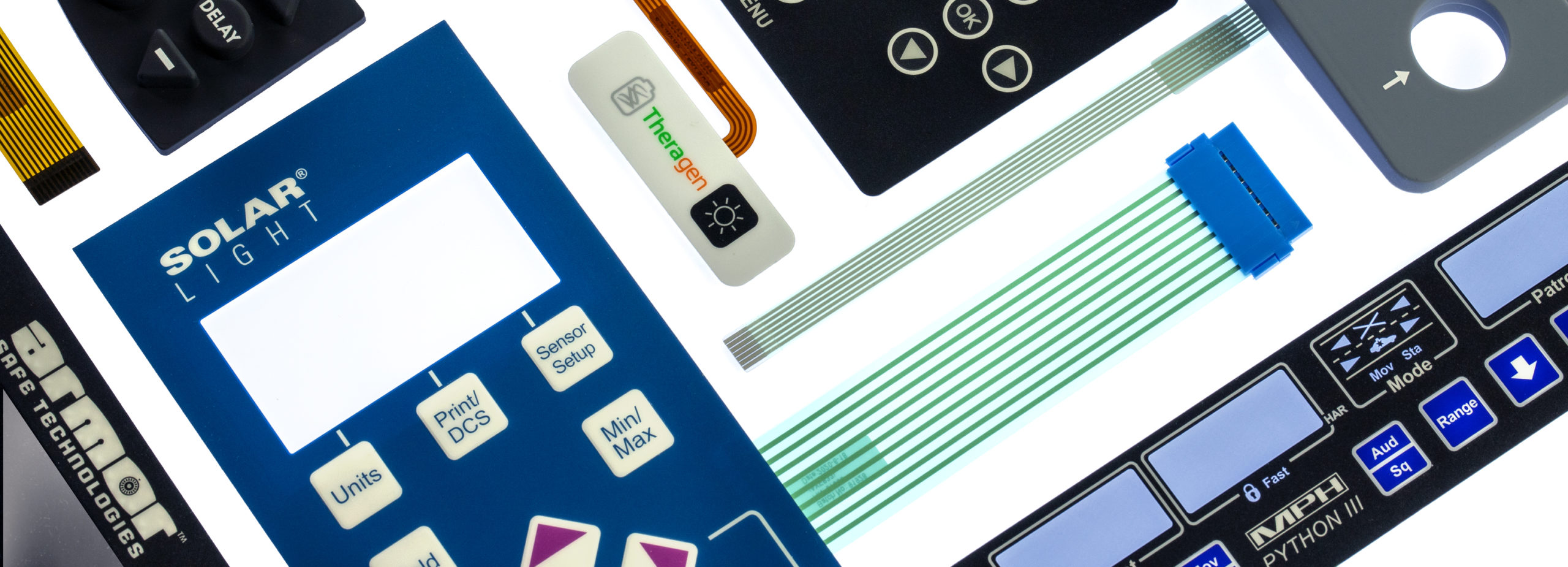Choosing the Right Membrane Switch for Your Business Needs
Choosing the Right Membrane Switch for Your Business Needs
Blog Article
Comprehending Membrane Layer Switches: The Secret to Sturdy and Reliable Controls

What Are Membrane Switches?
Membrane buttons are an innovative remedy in the world of individual interface innovation, integrating performance and design effortlessly. These devices serve as a user interface in between individuals and electronic systems, integrating several elements right into a portable format. Typically created from adaptable, slim layers of products, membrane buttons are created to reply to touch, allowing individuals to interact with machinery and electronic gadgets successfully.
The key elements of a membrane layer switch include a published circuit layer, graphic overlay, and a spacer layer that stops unintentional activation. The visuals overlay can be personalized to reflect brand identification or customer choices, boosting aesthetics while ensuring use. Membrane layer buttons are typically made use of in numerous applications, consisting of clinical tools, consumer electronic devices, and commercial tools, owing to their resilience and resistance to ecological aspects such as moisture and dirt.
One of the key advantages of membrane layer switches is their ability to withstand deterioration, making them excellent for high-traffic environments. In addition, they are lightweight and call for minimal space, enabling ingenious styles in product development. Generally, membrane switches over represent a sensible and efficient selection for modern-day electronic interfaces, marrying innovation with user-centric design principles.
How Membrane Layer Switches Over Work
The operation of membrane layer switches over joints on an easy yet efficient system that converts individual input right into electronic signals. When an individual presses the button, the top layer flaws, allowing a conductive element in the circuit layer to make contact with a matching conductive pad on the underside of the visuals overlay.
The layout of membrane layer switches can differ, but they usually incorporate domes or tactile aspects to give comments to the individual, improving the overall experience - membrane switch. The materials made use of in membrane layer switches, such as polyester or polycarbonate, add to their toughness and resistance to ecological elements, consisting of moisture and dirt. In addition, the published circuits are commonly enveloped, which shields them from wear and tear with time.
Benefits of Membrane Switches

Furthermore, membrane buttons are recognized for their longevity. Built from durable materials, they are resistant to dirt, dampness, and physical wear, which significantly expands their lifespan compared to traditional mechanical switches. This sturdiness makes them especially ideal for high-traffic atmospheres and applications calling for longevity.
Another considerable advantage is the simplicity of cleaning and maintenance. The smooth surface area of membrane layer switches over reduces dirt buildup and is typically invulnerable to spills, making them suitable for settings that require frequent sanitization.
Furthermore, membrane switches offer a streamlined profile, causing a thinner style that can be integrated into various tools without adding bulk. This feature not only boosts the visual charm however likewise adds to an extra ergonomic item style.
Applications of Membrane Buttons
Flexible and user-friendly, membrane switches find applications throughout a vast array of sectors, consisting of clinical devices, customer electronics, and commercial tools. In the medical area, these switches are our website indispensable to tools such as analysis devices, patient monitoring systems, and infusion pumps, where reliability and simplicity of cleaning are critical. Their capability to maintain and stand up to extreme atmospheres functionality makes useful content them ideal for such applications.

In customer electronics, membrane layer switches are used in items like microwaves, washing equipments, and remotes - membrane switch. Their smooth design enables for instinctive interface, enhancing the total user experience while supplying sturdiness and resistance to damage
Industrial devices also gains from membrane layer buttons, specifically in control panels for equipment and automation systems. These buttons offer defense against dirt and dampness, ensuring constant performance in difficult environments. Their personalized attributes allow makers to tailor them to details operational needs, enhancing effectiveness and performance.
Choosing the Right Membrane Layer Switch
When selecting a membrane button, it is vital to take into consideration various factors that influence performance and suitability for details applications. The main factors to consider include environmental problems, responsive responses, durability, and layout specs.
First, examine the operating setting; switches subjected to wetness, chemicals, or severe temperatures call for details products to ensure longevity and performance. Next off, assess the demand for responsive responses. Depending upon user interaction, some applications may gain from a responsive feedback to validate activation, while others might like a non-tactile layout read this for visual reasons.
Resilience is an additional important variable; membrane switches ought to be created to hold up against regular use, influences, and abrasion. Make certain the selected button can endure the anticipated lifecycle, specifically in high-usage situations.

Conclusion
In conclusion, membrane layer switches serve as necessary components in the style of durable and trusted control systems throughout different markets. The flexibility of membrane layer switches over allows for tailored remedies that satisfy specific functional requirements, enhancing their value in modern-day technology.
Membrane layer switches over represent an important element of modern user interface style, blending functionality with strength in numerous applications.Membrane layer switches are an innovative solution in the world of customer interface innovation, combining capability and design flawlessly. Generally constructed from versatile, slim layers of materials, membrane layer buttons are developed to react to touch, making it possible for individuals to connect with machinery and electronic tools properly.
The style of membrane layer switches can vary, yet they typically include domes or responsive aspects to offer feedback to the customer, enhancing the total experience.In conclusion, membrane switches over offer as crucial components in the design of reliable and durable control systems throughout different sectors.
Report this page